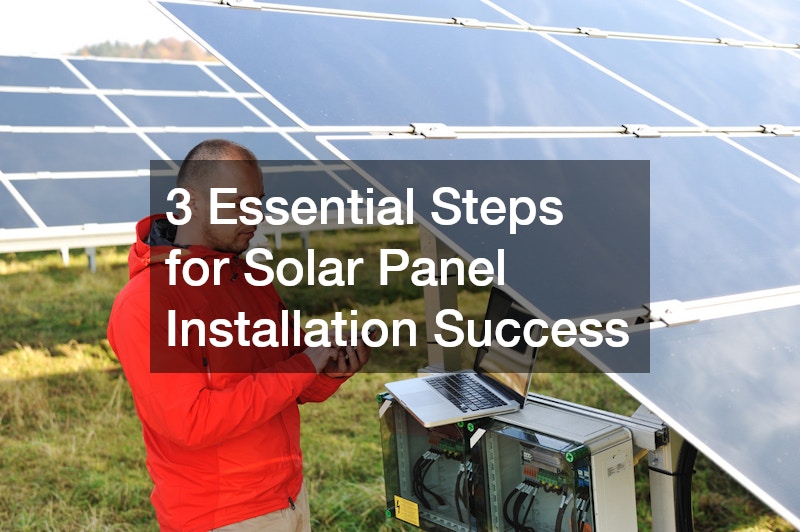Solar panel installation is one of the smartest investments Australians can make in today’s energy-conscious world. As the cost of traditional electricity continues to rise and environmental concerns become more urgent, more households and businesses are turning to solar energy as a sustainable solution.
However, to get the most out of this renewable resource, it’s important to approach the installation process with the right knowledge and preparation. Successful outcomes depend on more than simply purchasing quality panels. From site assessments to choosing the right installer, each step plays a vital role in long-term energy performance and savings.
Step 1: Assess Your Site and Energy Needs
Before any equipment is ordered or scaffolding goes up, you’ll need to evaluate whether your property is suitable for solar panel installation. This initial assessment is a crucial first step, and it begins with understanding your current energy consumption. Reviewing past energy bills will help determine the number of panels you may need and the size of the system that fits your lifestyle or operational demands.
Next, consider the physical location. The orientation and tilt of your roof are key factors. North-facing roofs generally offer the best sun exposure in Australia, and a tilt angle close to your location’s latitude will maximise efficiency. Shading from nearby trees, buildings or chimneys can also reduce output, so a shading analysis may be needed to find the optimal placement.
Structural integrity is another aspect often overlooked. Your roof must be in good condition to support the weight of the panels and withstand the installation process. It’s advisable to have a licensed roofer inspect the structure to ensure it won’t need repairs shortly after installation, which could result in extra costs or panel removal.
Step 2: Choose the Right Products and Professionals
Not all solar products or installation services are created equal. Once you’ve determined your energy requirements and assessed your site, the next step is to select a reliable provider. The solar market in Australia is competitive, with a wide range of suppliers offering different brands, packages and pricing. Take the time to compare quotes, check product warranties and understand what’s included in the installation service.
Make sure that the panels and inverters you select meet Australian standards and are listed on the Clean Energy Council’s approved products list. This is essential if you want to be eligible for government rebates or feed-in tariffs, which can significantly reduce the upfront cost of solar panel installation.
Equally important is choosing a qualified and experienced installer. All solar systems must be installed by a Clean Energy Council accredited installer to ensure compliance with safety regulations and optimal performance. Ask for references, read customer reviews and confirm credentials before signing any agreement. A good installer will not only set up the system correctly but also provide clear information on how it works, what to do if issues arise and how to maintain it over time.
Step 3: Plan for Maintenance and Monitor Performance
Even the highest-quality solar panel systems require regular maintenance to ensure ongoing efficiency. While solar panels are known for being low-maintenance, it’s still important to keep them clean and check for any signs of wear or damage. Dust, leaves, bird droppings and debris can accumulate over time and block sunlight, reducing the system’s output. A professional clean every 12 to 24 months is usually sufficient unless you’re in an area with high pollution or dust.
Monitoring your system’s performance is just as vital. Many modern solar inverters come with apps or web-based dashboards that provide real-time data on energy production and usage. By keeping an eye on this information, you can quickly identify any drops in performance and take action before it becomes a larger problem. Some energy providers even offer additional tools to track savings and forecast potential issues.
Battery storage systems are also becoming more popular in Australia, allowing users to store excess energy for use at night or during power outages. If you have or plan to install a battery, make sure it’s maintained according to the manufacturer’s guidelines to maximise its lifespan and return on investment.
Set Yourself Up for Solar Success
Investing in solar panel installation is a long-term decision that can deliver significant environmental and financial benefits. However, like any major upgrade, its success depends on doing things properly from the beginning. By thoroughly assessing your site and energy needs, selecting trusted products and professionals, and committing to ongoing maintenance, you give your system the best chance to perform optimally for many years.
Australia’s climate makes it one of the best places in the world to harness solar energy. With generous government incentives and increasing affordability, there’s never been a better time to consider solar panel installation. Following these essential steps ensures you make the most of your investment and enjoy cleaner, more cost-effective energy for the future.



